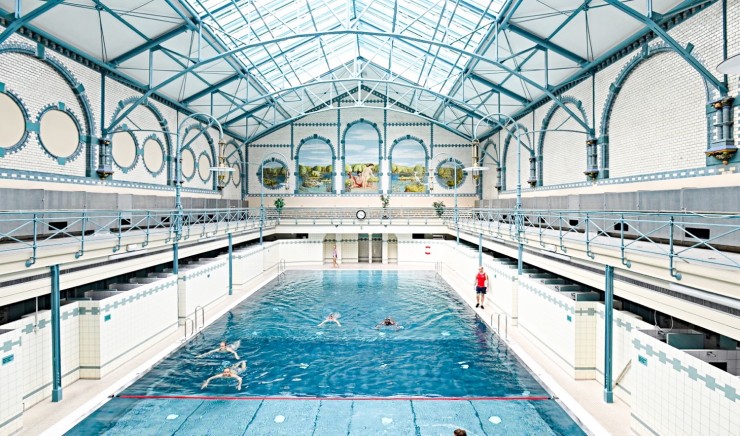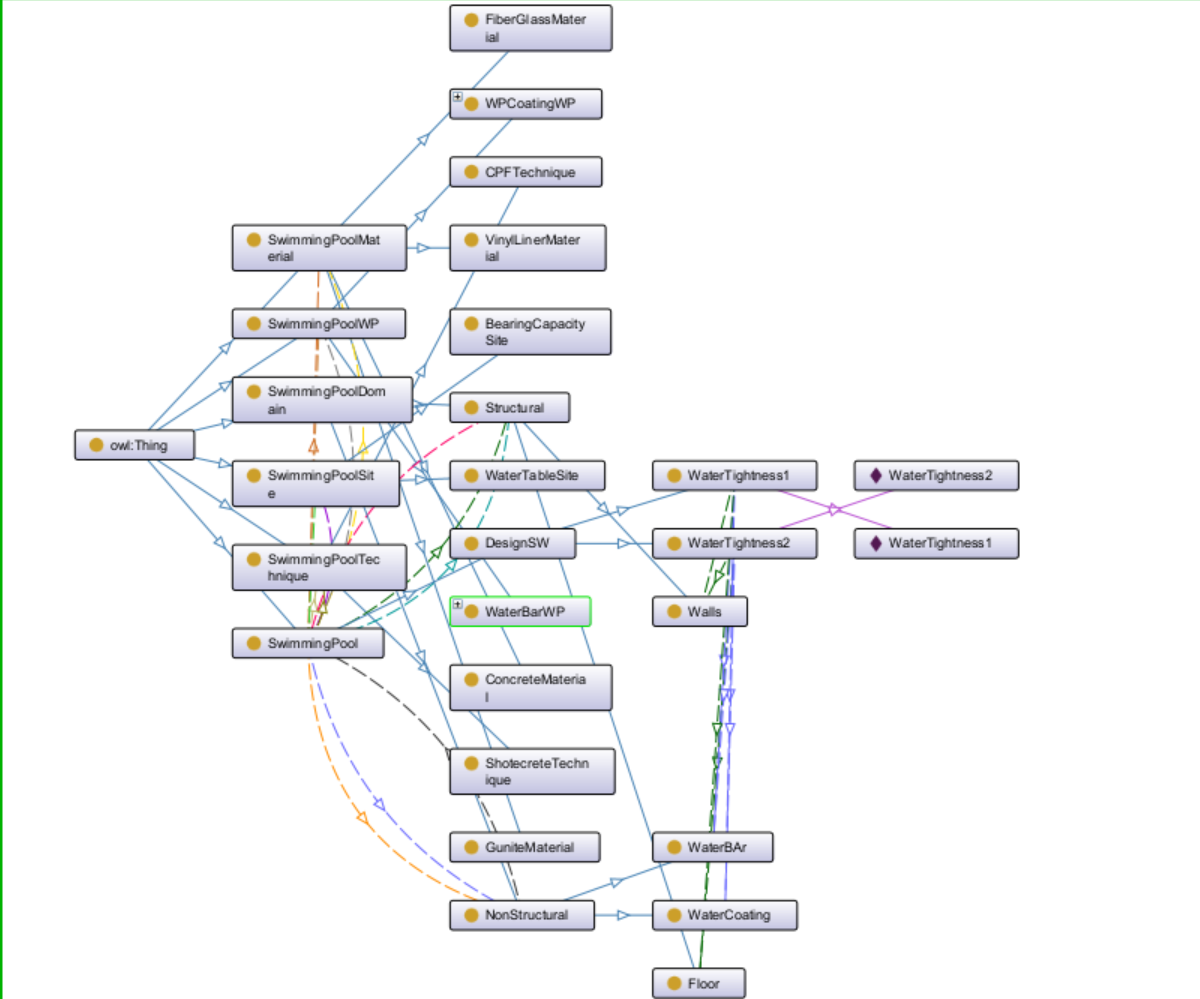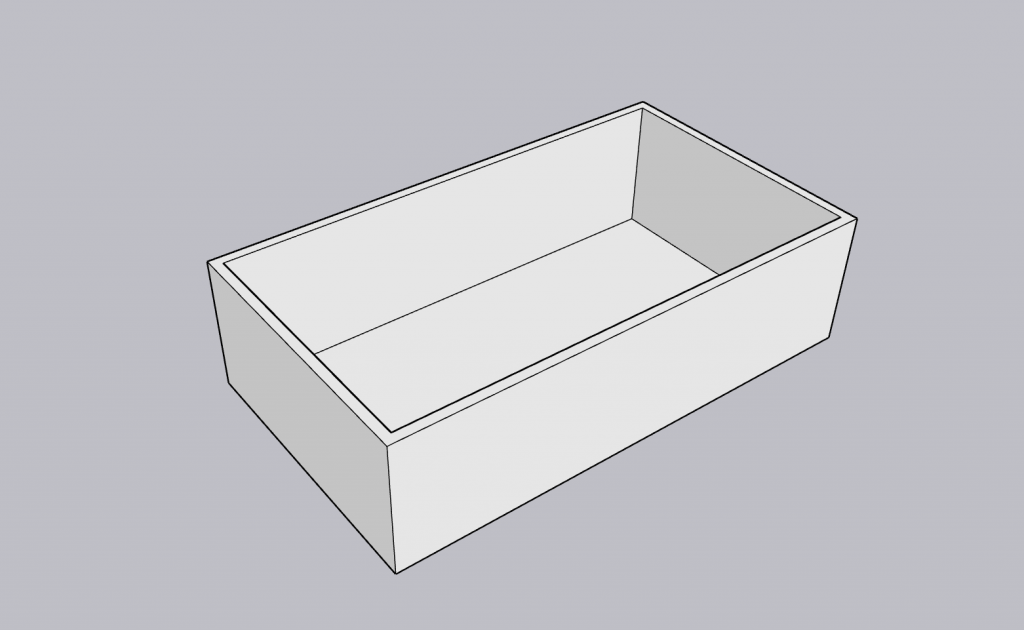Ontology for Swimming Pool Construction with Emphasis on Watertightness
This report introduces an ontology aimed at enhancing the construction of swimming pools, emphasizing the crucial aspect of watertightness. The ontology is designed to serve as a knowledge base for engineers engaged in the construction process, offering insights into materials, techniques, and site considerations to ensure optimum water retention and usage efficiency.
Purpose and Scope: The primary goal is to construct swimming pools that excel in watertightness, addressing materials used in construction, construction techniques, water-proofing methods, and soil site conditions.
Intended Users: The ontology targets engineers involved in the swimming pool construction process, providing them with a comprehensive guide to achieving watertightness.
Key Insights:
- Water Use and Conservation: Highlighting the importance of water conservation, the report draws attention to the significant amount of water swimming pools contain and the need for efficient water use and minimal waste.
- Watertightness Focus: The report delves into the construction of swimming pools with optimum watertightness, not just from an environmental perspective but also to ensure the longevity and efficiency of the pool.
- Construction Considerations: It covers various aspects affecting watertightness, including structural and non-structural elements, material selection, construction techniques, and waterproofing measures.
- Optimal Material and Techniques: The ontology suggests that concrete, coupled with Controlled Permeability Formwork (CPF) and shotcrete techniques, offers the best solution for watertight swimming pools. It also emphasizes the importance of waterproofing during and after the structural phase.
- Environmental and Structural Integrity: By choosing the right materials and techniques, the report aims to construct swimming pools that not only save water but also integrate seamlessly with civil engineering systems, ensuring both environmental sustainability and structural integrity.
Conclusion: The ontology presented in this report paves the way for constructing swimming pools that are efficient in water use and retain their integrity over time, making them more sustainable and cost-effective. This approach is not just about building pools; it’s about fostering a responsible and environmentally friendly construction practice.
Swimming Pool Parametric Modeling
Introduction
In this parametric modeling, we explore the design of private reinforced concrete swimming pools using parametric modeling. We base our analysis on guidelines from the American Concrete Institute (ACI) and Eurocode, focusing on sections related to water retaining structures like swimming pools. Our main goal is to ensure the pools are structurally stable. We model the following parameters:
Length: The horizontal distance from one end of the pool to the other. It influences the pool’s capacity and the distribution of forces along the pool’s longer axis.
Width: The horizontal distance across the pool. Like length, it affects the pool’s surface area and impacts the distribution of lateral forces.
Depth: This is a critical factor in swimming pool design.
Depth directly affects the hydrostatic load, which is the pressure exerted by the water at rest.In a swimming pool, this load correlates directly with the water’s depth. The formula for hydrostatic pressure, P=ρgh, explains this relationship, where P represents the hydrostatic pressure, ρ is the fluid’s density, g is the acceleration due to gravity, and h is the fluid’s depth. Depth influences not just the structural aspects of the pool, but also its usability and safety.
Reinforcement Ratio: This refers to the amount of reinforcing steel used relative to the volume of concrete. It plays a pivotal role in enhancing the structural integrity of the pool. An adequate reinforcement ratio is crucial for managing tensile stresses, controlling cracking, and ensuring the long-term durability of the pool.
For rectangular private pools, we consider these parameter ranges:

These ranges are based on typical designs for private pools and the Eurocode’s guidelines for minimum and maximum reinforcement. The reinforcement limits help balance crack prevention and maintain workability and durability.
In our modeling, we varied these parameters to see how they affect the pool’s structure and cost. Here’s what we found:
Structural and Economic Considerations
Structurally, a higher reinforcement ratio is better. It helps the pool withstand water pressure and prevents cracks, ensuring durability and safety. However, economically, a lower ratio is preferable as it reduces material and construction costs.
Our modeling shows that increasing depth and reinforcement improves structural integrity but can raise costs. Conversely, reducing depth while keeping sufficient reinforcement can be more cost-effective. Therefore, finding the right balance between structural needs and budget is key to optimal design.
Our study provides insights into how design choices impact both the structure and cost of swimming pools. It highlights the need for designs that meet high performance standards while being economically feasible.
References
1.Eurocode 2 (EN 1992-1-1) (EN 1992-3)
2.ACI 350
3.Parametric modeling and simulation of Low temperature energy storage for cold-climate multi-family residences using a geothermal heat pump system with integrated phase change material storage tank Author links open overlay panelA. Alkhwildi, R. Elhashmi, A. Chiasson
4.Performance modeling and parametric study of a stratified water thermal storage tank
5.Philip H. Perkins – Swimming Pools_ Design and Construction-Spon Press (2000)
6.Eurocode 2 is Eurocode 2: Design of concrete structures – Part 3: Liquid retaining and containment structures (EN 1992-3)
7.https://www.deutschland.de/en/topic/environment/water-and-hydrogen-in-germany-facts-and-figures#:~:text=On%20average%2C%20128%20litres%20are%20consumed%20per%20person%20and%20day
<Previous Page Main Page| Individual System|Integrated Systems|Download next page>


